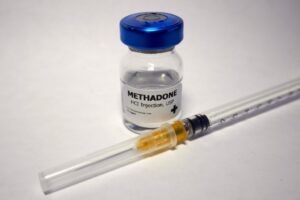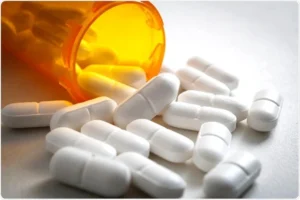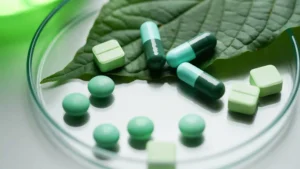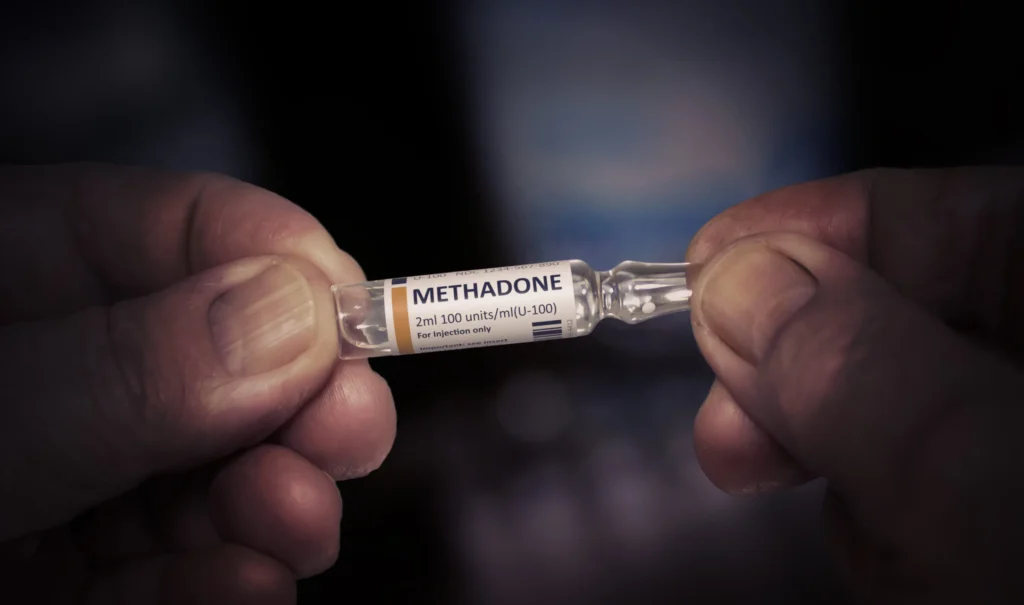Amidst the opioid epidemic, methadone maintenance treatment has emerged as a critical tool in helping individuals regain control of their lives and overcome the devastating grip of opioid addiction. Yet, despite its efficacy, methadone remains widely misunderstood. In this comprehensive guide, we delve into the intricacies of methadone for opioid use disorder treatment, exploring its benefits, challenges, and the vital role it plays in supporting individuals.
Contents
What Is Methadone?
 Methadone is a synthetic opioid medication primarily used in the treatment of opioid use disorder (OUD). Unlike other opioids, methadone has unique pharmacological properties that make it an effective tool in managing addiction. It works by binding to the same receptors in the brain that opioids like heroin or prescription painkillers target.
Methadone is a synthetic opioid medication primarily used in the treatment of opioid use disorder (OUD). Unlike other opioids, methadone has unique pharmacological properties that make it an effective tool in managing addiction. It works by binding to the same receptors in the brain that opioids like heroin or prescription painkillers target.
But it does so in a way that mitigates withdrawal symptoms and reduces cravings without inducing the euphoria associated with other opioids. This makes methadone a cornerstone of medication-assisted treatment (MAT) programs, where it is administered orally in liquid form or as a dissolvable tablet daily under medical supervision.
Despite its effectiveness, methadone must be carefully managed by qualified healthcare providers. They will help to prevent misuse and overdose, highlighting the importance of comprehensive addiction treatment programs.
When Was Methadone First Used For Opioid Use Disorder?
Methadone was first introduced as a treatment for opioid use disorder (OUD) in the 1960s, revolutionizing the approach to addiction treatment. Developed by German scientists during World War II, methadone gained recognition for its potential to alleviate withdrawal symptoms and reduce cravings without producing the intense euphoria associated with other opioids.
Its use in treating OUD was pioneered by Dr. Vincent Dole, Dr. Marie Nyswander, and Dr. Mary Jeanne Kreek at Rockefeller University in New York City. They conducted groundbreaking research demonstrating its effectiveness as a maintenance therapy for individuals with opioid addiction.
The establishment of methadone maintenance treatment (MMT) programs marked a significant milestone in addiction medicine. And, offering a more humane and evidence-based approach to managing opioid addiction. This comprehensive approach not only addressed the physical aspects of addiction but also helped individuals address the underlying psychological, social, and behavioral factors contributing to their substance use.
What Are The Current Medications Used To Treat Opioid Disorder?
 Several medications are currently used to treat opioid use disorder (OUD), each with its mechanism of action and benefits:
Several medications are currently used to treat opioid use disorder (OUD), each with its mechanism of action and benefits:
- Methadone
Methadone is a long-acting opioid agonist that helps stabilize individuals with OUD by preventing withdrawal symptoms and reducing cravings without producing the intense euphoria associated with other opioids. It is typically administered orally daily under medical supervision.
- Buprenorphine
Buprenorphine is a partial opioid agonist that works similarly to methadone but has a lower risk of respiratory depression and overdose. It comes in various formulations, including sublingual tablets, sublingual films, and long-acting injections, providing flexibility in treatment options.
- Naltrexone
Naltrexone is an opioid antagonist that blocks the effects of opioids by binding to opioid receptors in the brain. Thereby reducing the desire to use opioids. It is available in both oral and extended-release injectable formulations, offering options for daily or monthly dosing.
These medications are often used as part of medication-assisted treatment (MAT) programs. This combines medication with counseling, therapy, and support services to provide comprehensive care for individuals with OUD.
Benefits And Risks With Methadone For Opioid Use Disorder
Methadone offers several benefits in the treatment of opioid use disorder (OUD):
Benefits
- Reduction of Withdrawal Symptoms: Methadone helps alleviate withdrawal symptoms, such as cravings, pain, and dysphoria, allowing individuals to function more normally and engage in daily activities without the distress of withdrawal.
- Stabilization: By providing a steady level of opioid activity in the brain, methadone stabilizes individuals with OUD. And, reducing the fluctuations in mood and energy levels associated with opioid addiction.
- Reduction of Cravings: Methadone’s action on opioid receptors helps reduce cravings for other opioids. And, making it easier for individuals to abstain from drug use and focus on recovery.
- Decreased Risk of Overdose: Methadone treatment decreases the risk of overdose by blocking the effects of other opioids and reducing the euphoric effects of opioid use.
Risks
However, methadone treatment also carries certain risks and considerations:
- Potential for Dependency: Methadone itself is an opioid medication and can lead to physical dependence if not used as prescribed. Abrupt discontinuation or misuse of methadone can lead to withdrawal symptoms.
- Side Effects: Common side effects of methadone include drowsiness, constipation, sweating, and sexual dysfunction. These side effects can impact daily functioning and quality of life for some individuals.
- Risk of Overdose: While methadone can reduce the risk of overdose when used as prescribed, there is still a risk of overdose if taken in high doses or combined with other substances, particularly central nervous system depressants like alcohol or benzodiazepines.
- Regulatory Requirements: Methadone treatment is highly regulated, requiring individuals to receive medication through specialized opioid treatment programs (OTPs) or certified healthcare providers. This can create logistical challenges and barriers to access for some individuals seeking treatment.
Overall, the benefits of methadone treatment often outweigh the risks for individuals with opioid use disorder. Especially when used as part of a comprehensive treatment plan that includes counseling, therapy, and support services.
Natural Approaches To Overcome Opioid Use Disorder
 Overcoming opioid use disorder (OUD) can be a challenging journey. However, there are natural approaches and complementary therapies that can support recovery alongside traditional treatments.
Overcoming opioid use disorder (OUD) can be a challenging journey. However, there are natural approaches and complementary therapies that can support recovery alongside traditional treatments.
Practical tips
Here are some strategies that individuals with OUD may find beneficial:
Exercise and Physical Activity
Engaging in regular exercise and physical activity can help alleviate stress, improve mood, and promote overall well-being. Exercise releases endorphins, which are natural chemicals in the brain that can help reduce pain and boost mood, making it a valuable tool in managing withdrawal symptoms and cravings.
Nutrition and Diet
Eating a balanced and nutritious diet can support recovery by providing essential nutrients that the body needs to heal and function optimally. Focus on incorporating plenty of fruits, vegetables, whole grains, lean proteins, and healthy fats into your diet. Avoiding processed foods, sugary snacks, and caffeine can help stabilize energy levels and mood.
Mindfulness and Meditation
Practices such as mindfulness meditation and deep breathing exercises can help individuals with OUD develop greater self-awareness, manage cravings, and cope with stress more effectively. Mindfulness techniques can also promote a sense of calm and relaxation. This can be especially beneficial during times of emotional distress or cravings.
Acupuncture
Acupuncture is a traditional Chinese medicine practice that involves inserting thin needles into specific points on the body to alleviate pain and promote healing. Some research suggests that acupuncture may help reduce opioid cravings, alleviate withdrawal symptoms, and support recovery from OUD when used as part of a comprehensive treatment plan.
Herbal Supplements
Certain herbal supplements, such as kava, passionflower, and valerian root, have been used traditionally to reduce anxiety, promote relaxation, and support sleep. While more research is needed to confirm their effectiveness for OUD specifically, some individuals may find these supplements helpful as part of a holistic approach to recovery.
Peer Support Groups
Connecting with others who have experienced similar struggles can provide valuable support, encouragement, and understanding during the recovery process. Peer support groups, such as Narcotics Anonymous (NA) or SMART Recovery, offer a sense of community, accountability, and hope for individuals working to overcome OUD.
It’s important to note that while natural approaches and complementary therapies can be helpful adjuncts to traditional treatment for OUD. However, they are not a substitute for evidence-based medications and counseling interventions.
Conclusion
In conclusion, overcoming opioid use disorder is a complex journey that requires a multifaceted approach, combining medical treatment with natural strategies and support systems. Medications like methadone for opioid use disorder can help manage withdrawal symptoms and cravings, while complementary therapies such as exercise, mindfulness, and acupuncture can provide additional recovery support.
By embracing a holistic approach that addresses the physical, emotional, and social aspects of opioid addiction, individuals with opioid use disorder can embark on a path toward healing, hope, and a brighter future.
